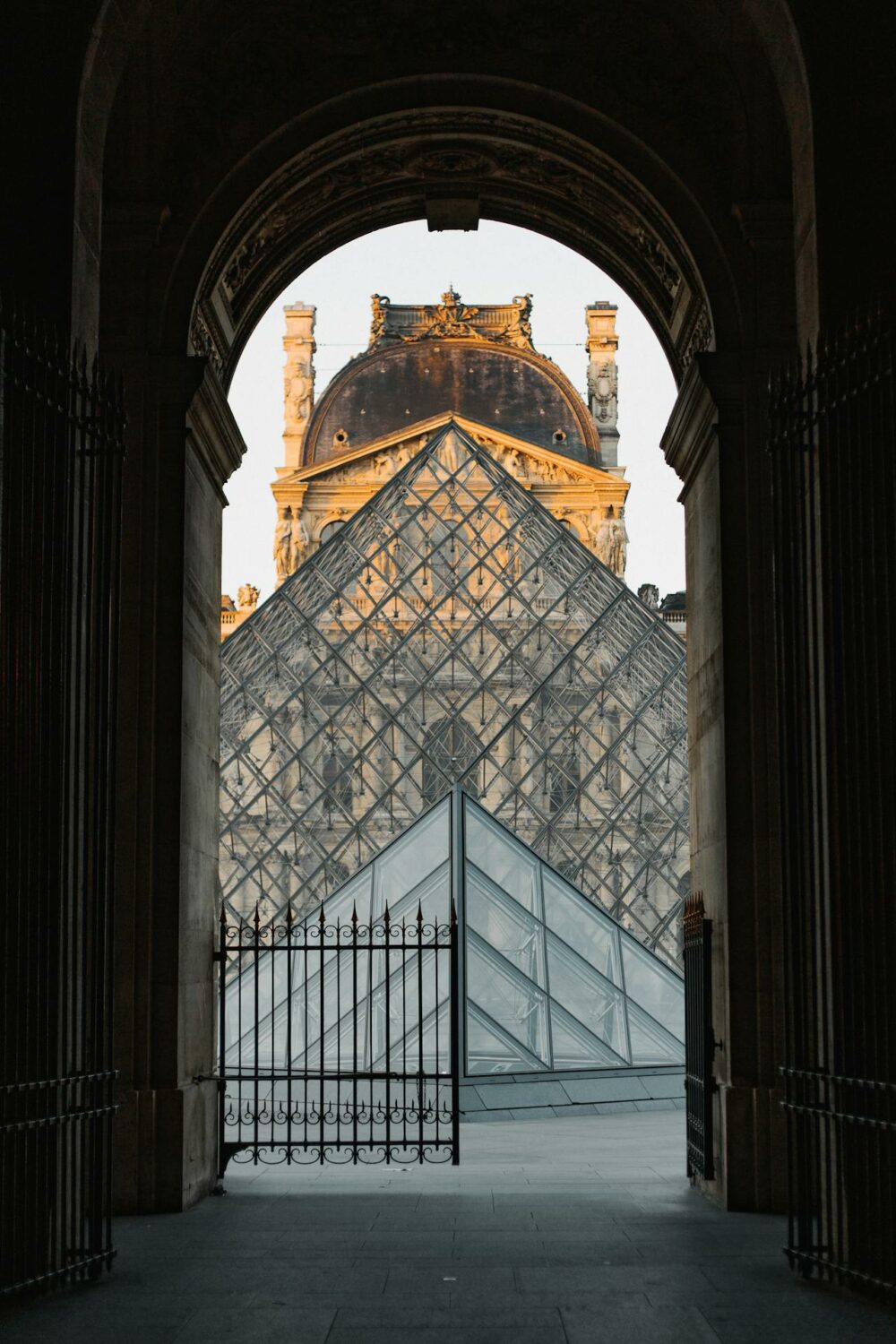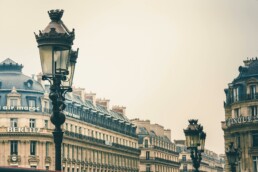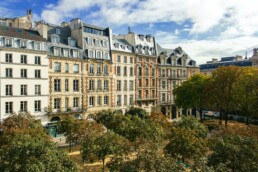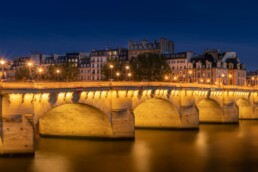Crossing the vast Cour Napoléon at the heart of the Louvre Palace, one’s gaze is inevitably drawn to a structure that seems to emerge from a dream: the glass pyramid. This pyramid, standing proudly, has become one of the iconic symbols of Paris, a point of convergence between past and present, between the ancient grandeur of monarchy and daring modernity.
In 1984, the Sino-American architect Ieoh Ming Pei was commissioned by President François Mitterrand to design a new entrance for the Louvre Museum. This choice at the time sparked lively controversies. How could such a modern structure blend with the austere classicism of the palace? Pei, however, rose to this challenge with extraordinary elegance. Inaugurated in 1989, the pyramid is composed of 673 glass panes in the shape of diamonds and triangles, assembled to form a structure that is both transparent and luminous, offering a new and radiant perspective on the Louvre.
I still recall my first visits to the pyramid, that sensation of temporal dislocation upon entering the site. The sunlight, filtered through the glass panels, created play of shadows and reflections on the courtyard floor, adding an almost surreal touch to the historic setting. The pyramid seemed to converse with the classical facades of the palace, reflecting their own history while projecting them into the future.
The accounts of my father, an ardent admirer of modern architecture, still resonate in my memory. He described with passion the meticulousness and precision required to construct this audacious structure. The technical challenges, the mixed reactions from the public and critics—all were part of the epic story of the Louvre Pyramid. Yet over the years, this daring work has become an icon, beloved by Parisians and visitors from around the world.
Strolling around the pyramid, one cannot help but ponder how it symbolizes the fusion of old and new. Each glass panel, each line, is an invitation to contemplation and reflection. It is a constant dialogue between France’s rich and complex history and its desire to look forward, to embrace modernity while respecting its heritage.
Thus, the Louvre Pyramid is not simply a museum entrance. It is a symbol of Paris, a testament to the audacity and vision of its creators. It reminds us that beauty can arise from contrasts, that history and modernity can coexist harmoniously. Each visit to the pyramid is an invitation to rediscover Paris, to marvel at this perfect union between past and present, between ancient stone and luminous glass.
Leaving the Cour Napoléon, gaze still captivated by the pyramid, one carries away a fragment of that magic, a glimmer of that timeless light. The Louvre Pyramid, through its forms and reflections, reminds us of the richness of our heritage and the power of human vision, capable of transforming the world through art and architecture.

Lire également :
5 November 2024
Baron Haussmann: Architect of Parisian Metamorphosis
5 November 2024
The History of Place Dauphine: A Parisian Evocation
5 November 2024






